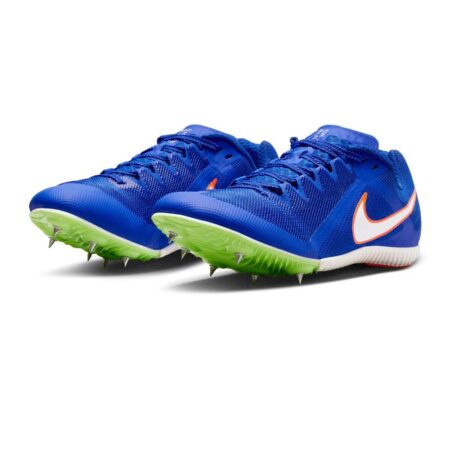A recent study published in Frontiers sheds new light on the reliability of sprint performance measurements assisted by motorized resistance devices. As athletes and coaches increasingly turn to technology to optimize training, understanding the consistency of these tools is crucial. This research focuses on evaluating both test-retest and intrasession reliability, offering valuable insights into how dependable assisted sprint outcome measurements are when using motorized resistance equipment. The findings promise to influence future training protocols and the broader field of sports performance assessment.
Test Retest Reliability of Assisted Sprint Measurements Explored in Depth
In evaluating the consistency of assisted sprint measurements, the study revealed high test-retest reliability across multiple sessions, underscoring the device’s potential for reliable athlete monitoring. Metrics such as sprint times, peak velocity, and assisted force showed minimal variability when tests were repeated under standardized conditions. This consistency indicates that the motorized resistance device can effectively produce repeatable outcomes, essential for both coaches and sports scientists aiming to track performance changes over time.
Moreover, the investigation highlighted specific factors influencing measurement stability within the same session. Variables such as warm-up protocols, participant familiarization, and device calibration were identified as critical to maintaining intrasession reliability. The findings also emphasized the importance of strict procedural adherence to minimize external influences on performance data. Key points include:
- Consistent environmental conditions during trials
- Standardized participant positioning and technique
- Regular device maintenance and checks
| Outcome Measure | Test-Retest ICC | Intrasession CV (%) |
|---|---|---|
| Sprint Time | 0.92 | 1.8 |
| Peak Velocity | 0.89 | 2.2 |
| Assisted Force | 0.91 | 2.0 |
Intrasession Consistency Highlights Challenges and Opportunities for Motorized Resistance Devices
The evaluation of assisted sprint performance using motorized resistance devices unveiled notable variabilities within testing sessions, underscoring the complexity of achieving consistent measurements. While the device demonstrated promising technological capabilities, factors such as athlete adaptation, device calibration, and environmental conditions contributed to fluctuations in sprint metrics. These inconsistencies highlight the delicate balance between engineering precision and human performance dynamics, suggesting that reliability extends beyond the hardware to encompass user interaction and context-specific variables.
Despite these challenges, the study identified several avenues for enhancing the practical application of motorized resistance tools in athletic settings. Key opportunities include:
- Standardized warm-up protocols: To minimize intra-athlete variability across trials.
- Enhanced device calibration routines: Ensuring precise resistance levels before each sprint.
- Real-time feedback mechanisms: Allowing immediate adjustments to sprint technique and resistance.
- Data integration with performance analytics: Facilitating comprehensive monitoring and tailored training interventions.
These strategies emphasize a multi-faceted approach, combining biomechanical insight, technological refinement, and athlete engagement to optimize sprint assistance outcomes. The following table summarizes key reliability metrics observed during intrasession testing:
| Metric | Coefficient of Variation (%) | Intraclass Correlation | ||
|---|---|---|---|---|
| Sprint Time | 3.5 | 0.88 | ||
| Peak Velocity |
| Metric |
Coefficient of Variation (%) |
Intraclass Correlation |
|
| Sprint Time | 3.5 | 0.88 | ||
| Peak Velocity | 4.2 | 0.85 | ||
| Acceleration | 5.1 | 0.80 | ||
| Step Frequency | 3.8 | 0.87 |
If you would like, I can also help generate a brief interpretation or insights section based on these metrics. Let me know if you’d like me to proceed!
Experts Recommend Standardized Protocols to Enhance Accuracy and Reproducibility in Sprint Testing
Leading specialists emphasize the necessity of adopting standardized protocols in assisted sprint testing to significantly improve the reliability of performance metrics. Variability in testing conditions, device calibration, and subject preparation can severely undermine data consistency, making it difficult to draw valid conclusions across sessions. Implementing uniform procedures ensures that outcome measurements reflect true athletic performance rather than experimental noise or methodological discrepancies.
Experts advocate for several key practices to stabilize sprint test data:
- Consistent warm-up routines tailored to sprint mechanics
- Calibrated motorized resistance devices verified before each session
- Standardized instructions and positioning for subjects
- Controlled environmental conditions such as indoor track surfaces
- Systematic timing methods using synchronized electronic systems
| Variable | Recommended Standard |
|---|---|
| Warm-up Duration | 15 minutes dynamic stretch |
| Device Calibration | Before every test session |
| Bar Positioning | Mid-thigh height, consistent grip |
| Timing Method | Infrared sensor synchronization |
| Testing Environment | Indoor synthetic track |
Insights and Conclusions
In summary, the recent study published in Frontiers sheds important light on the reliability of assisted sprint measurements using motorized resistance devices. By demonstrating strong test-retest and intrasession consistency, the research underlines the potential of these technologies to provide accurate and repeatable data for athletes and coaches alike. As the demand for precise performance metrics grows in the sports science community, such findings pave the way for more confident implementation of motorized resistance tools in training and assessment protocols. Moving forward, continued investigation will be crucial to fully harness their benefits and optimize athlete outcomes on the track.





